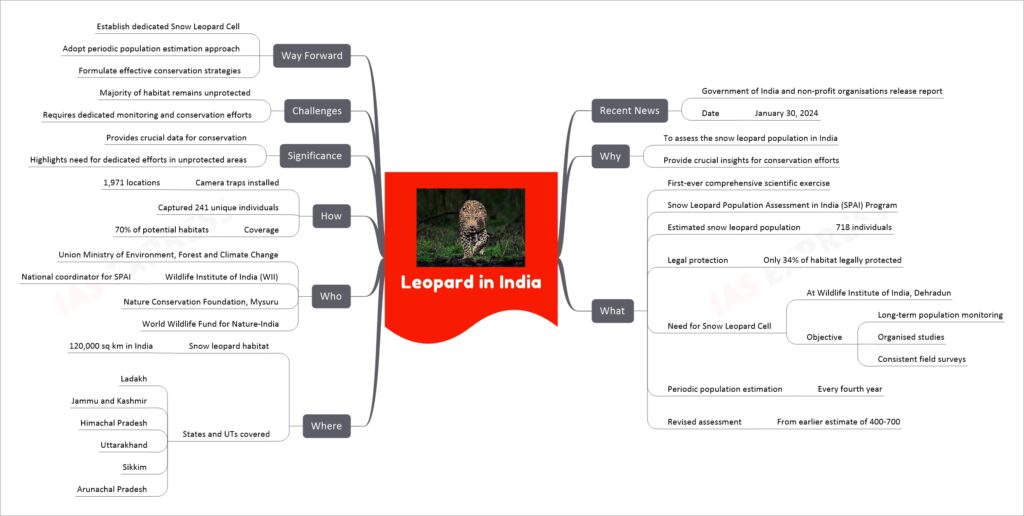Leopard in India

The report on the status of snow leopards in India, released on January 30, 2024, marked a significant scientific achievement as it presented the first-ever comprehensive assessment of the snow leopard population in the country. With an estimated count of 718 snow leopards, the study underscored the critical need for dedicated conservation efforts, given that only a third of their habitat is under legal protection. Spearheaded by the Wildlife Institute of India, with the support of the Union Ministry of Environment, Forest and Climate Change, the Nature Conservation Foundation, Mysuru, and the World Wildlife Fund for Nature-India, this initiative highlights the importance of establishing a dedicated Snow Leopard Cell for long-term monitoring and conservation strategies. The assessment, which utilized camera traps across various states and union territories, not only provides crucial data for preserving these vulnerable species but also calls for periodic population estimation to address threats effectively and ensure their survival.

